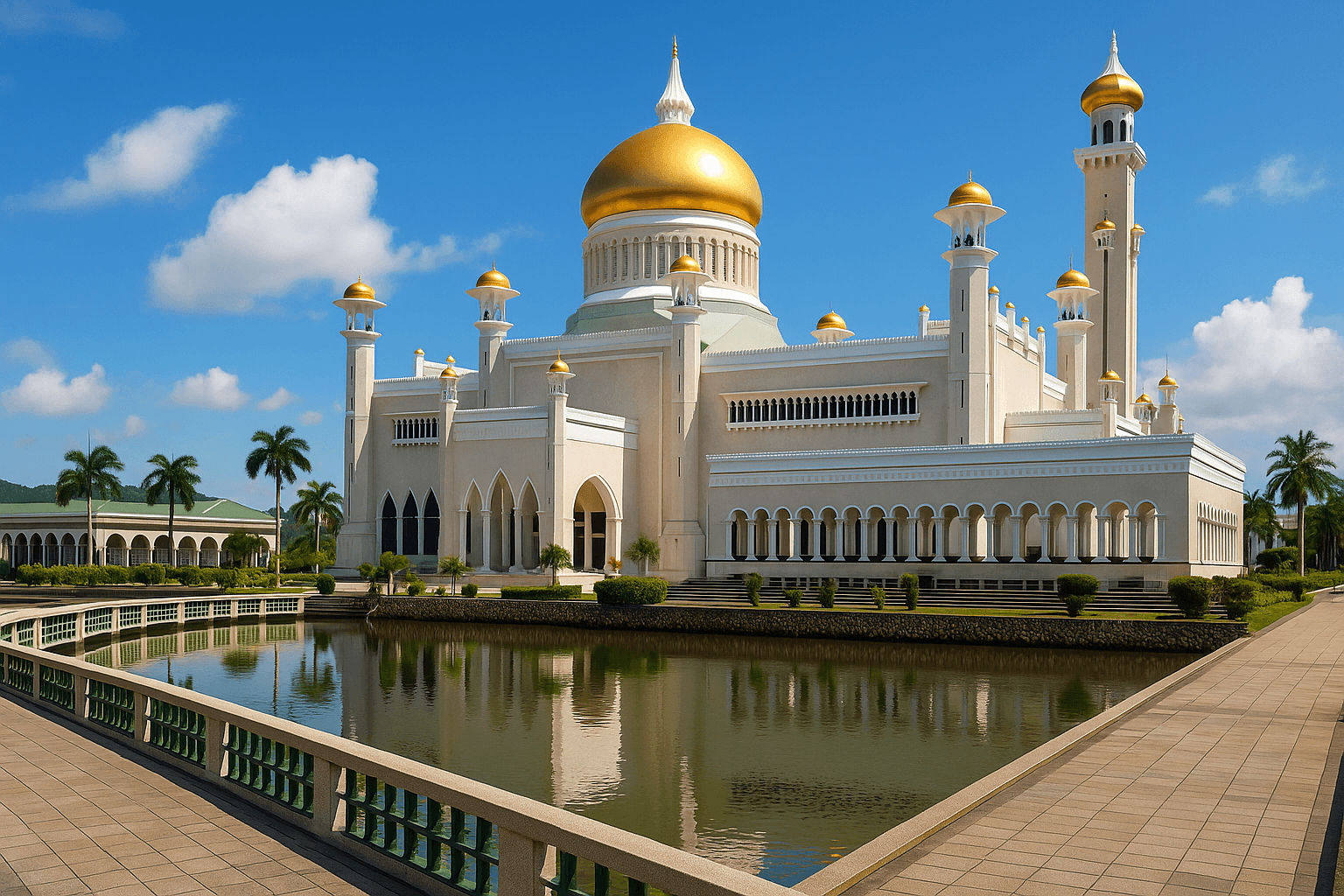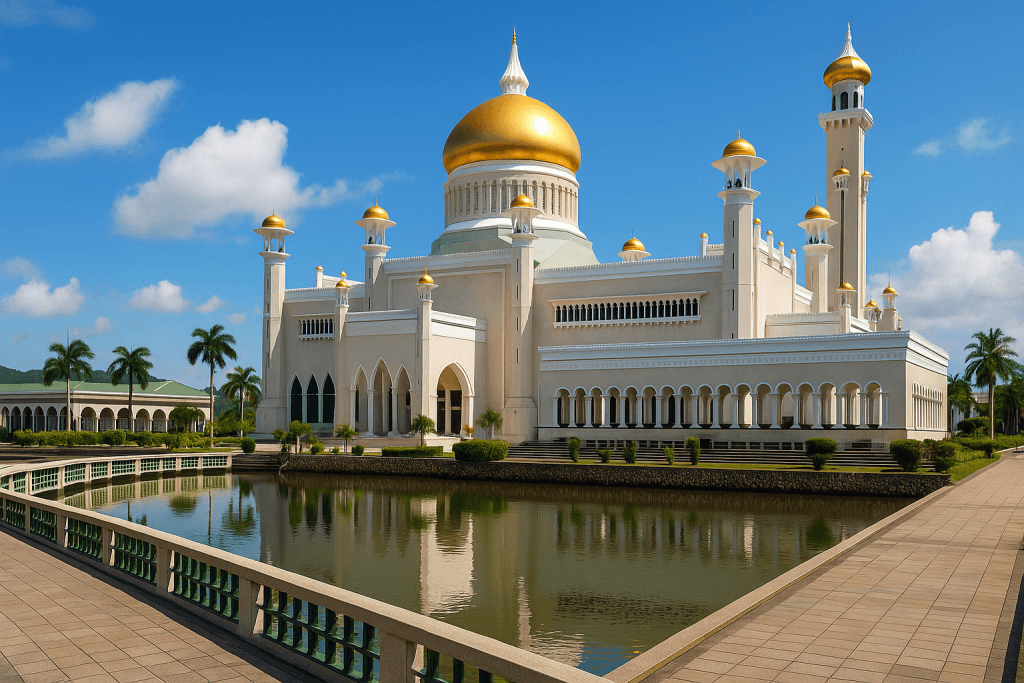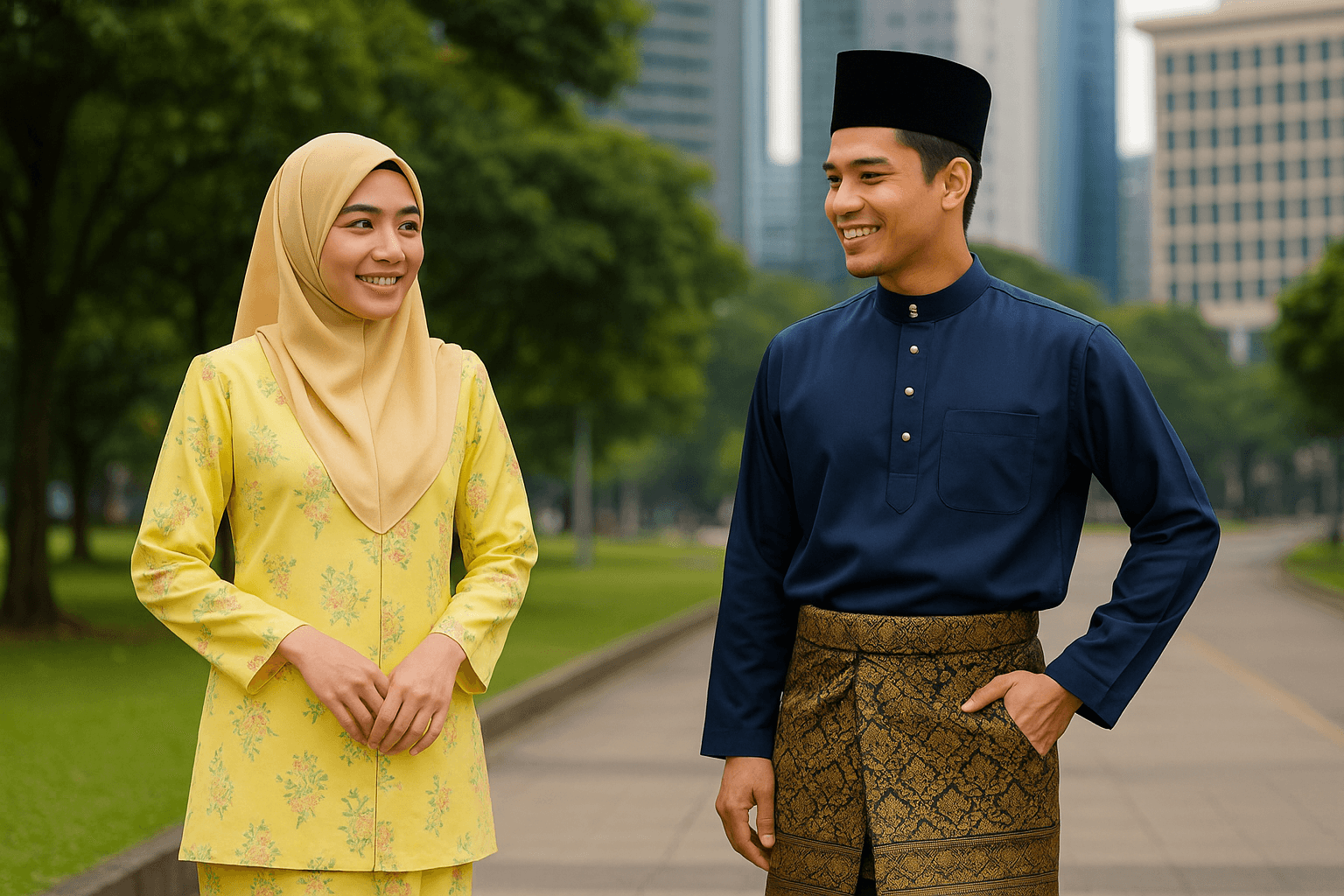Islamic architecture has been one of the most prominent symbols of cultural expression in Brunei, where faith, tradition, and modern development merge into a unique identity. The beauty of Brunei’s mosques, palaces, and religious complexes does not only reflect architectural brilliance but also conveys deeper meanings about spirituality, cultural values, and social identity.
This heritage is intrinsically tied to Customs and Social in Brunei, because architecture in this context is not merely functional—it serves as a reflection of religious practices, community values, and Bruneian ways of life.
Brunei’s Islamic architecture stands as a testimony to the nation’s devotion to Islam and its monarchy, embracing both traditional Malay influences and global Islamic styles. Domes, minarets, calligraphy, geometric patterns, and carefully designed courtyards all tell stories about Bruneian identity. In order to understand the country’s architectural heritage, one must also understand its people, their customs, and the way Islam shapes every layer of their social fabric.
This article explores Islamic architecture in Brunei through its evolution, design features, iconic landmarks, and its role in reinforcing Customs and Social Life in Brunei.

The Historical Evolution of Islamic Architecture in Brunei
Early Islamic Influence
Islam arrived in Brunei around the fourteenth century, shaping both religious life and architectural expression. Initially, mosques were constructed using local materials such as timber, bamboo, and palm leaves, reflecting both Malay traditions and Islamic principles. While early mosques were modest, their layout already reflected the importance of communal prayer, spiritual purity, and the alignment toward Mecca.
These structures marked the beginning of a cultural transformation, where faith and architecture intertwined with Customs and Social Life in Brunei. As Islam grew stronger, the role of architecture expanded, influencing royal palaces, community centers, and even marketplaces.
Royal Patronage and Expansion
The rise of the Bruneian Sultanate further developed architectural projects. Royal patronage ensured that mosques were not only places of worship but also symbols of power, unity, and legitimacy. The Sultan’s commitment to Islam directly influenced the construction of grand structures, embedding architecture into the heart of Customs and Social Life in Brunei.
Over centuries, Islamic architecture evolved, integrating foreign styles brought by traders, scholars, and architects from the Middle East, India, and other Malay regions.
Defining Features of Islamic Architecture in Brunei
Domes and Minarets
One of the most recognizable elements in Brunei’s mosques is the majestic dome, often gilded with gold to represent divine illumination and royal authority. Minarets, tall towers used for the call to prayer, reflect not only functional use but also grandeur. These features play an important role in shaping city skylines, reinforcing the sacred rhythm of prayer in Customs and Social Life in Brunei.
Calligraphy and Ornamentation
Arabic calligraphy, featuring verses from the Qur’an, adorns walls, arches, and domes, reminding worshippers of the spiritual foundation of their community. Geometric motifs and arabesques symbolize the infinite nature of God, while floral patterns reflect harmony with nature, which is central to both Islamic teachings and Customs and Social Life in Brunei.
Courtyards and Prayer Halls
Open courtyards and expansive prayer halls are essential, emphasizing unity and equality. Bruneian mosques are designed to accommodate large gatherings, particularly during Friday prayers and Eid celebrations. This aligns with communal traditions, further connecting architecture to Customs and Social Life in Brunei.
Integration with Nature
Brunei’s Islamic architecture often incorporates gardens, water features, and green surroundings, symbolizing paradise and spiritual tranquility. This integration resonates with local customs that emphasize harmony with the natural environment, a principle deeply tied to Customs and Social Life in Brunei.
Iconic Examples of Islamic Architecture in Brunei
Sultan Omar Ali Saifuddien Mosque
Built in 1958, the Sultan Omar Ali Saifuddien Mosque is one of the most iconic symbols of Brunei. Featuring a golden dome, Italian marble columns, and a man-made lagoon, this mosque exemplifies both classical Islamic styles and modern innovation. It stands not only as a place of worship but also as a national identity marker, intertwining faith, monarchy, and Customs and Social Life in Brunei.
Jame’ Asr Hassanil Bolkiah Mosque
Opened in 1994 to commemorate the 25th anniversary of Sultan Hassanal Bolkiah’s reign, this mosque boasts 29 golden domes, symbolizing the 29th Sultan. Its grandeur reflects the strong bond between religion and monarchy, reinforcing the central role of Islam in Customs and Social Life in Brunei.
Kampong Ayer Mosques
In the traditional water village, Kampong Ayer, mosques are built on stilts, reflecting the adaptation of Islamic architecture to local geography. These structures highlight how religious spaces are embedded into daily life, ensuring that Customs and Social Life in Brunei are harmonized with the unique environment of the country.
Royal Palaces and Islamic Elements
The Istana Nurul Iman, the world’s largest residential palace, integrates Islamic design with Malay cultural motifs. With golden domes and expansive courtyards, the palace is not just a royal residence but a cultural landmark that embodies Islamic values within the broader framework of Customs and Social Life in Brunei.
Social and Cultural Functions of Islamic Architecture
A Center for Community Life
Mosques are not only prayer spaces but also community centers where Bruneians gather for weddings, lectures, Quranic recitations, and community discussions. This demonstrates how architecture reinforces the link between faith and Customs and Social Life in Brunei.
Religious Education
Many mosques include madrasahs and libraries, emphasizing the importance of knowledge and faith. These educational facilities support the continuation of Islamic teachings, ensuring that younger generations remain connected to both religion and Customs and Social Life in Brunei.
Festivals and Celebrations
Eid al-Fitr, Eid al-Adha, and Maulidur Rasul are celebrated with mass prayers in grand mosques. These architectural spaces thus provide a stage for both spiritual devotion and cultural celebrations, integrating Islamic heritage with Customs and Social Life in Brunei.
Islamic Architecture and National Identity
Monarchy and Religion
The close link between the Sultanate and Islam is reflected in architectural projects, where mosques and palaces symbolize the unity of leadership, faith, and cultural identity. This connection directly influences Customs and Social Life in Brunei, since loyalty to the Sultan and devotion to Islam remain central.
Tourism and Cultural Diplomacy
Islamic landmarks attract visitors from across the world, turning Brunei into a showcase of Islamic culture in Southeast Asia. The beauty of these mosques is not only spiritual but also cultural, projecting Bruneian identity to the global stage while reinforcing Customs and Social Life in Brunei at home.
Contemporary Islamic Architecture in Brunei
Modern Innovations
New mosques and Islamic centers blend advanced engineering with traditional design. While glass, steel, and air-conditioning reflect modern lifestyles, domes, minarets, and calligraphy ensure that spiritual identity remains intact. This balance illustrates how architecture adapts to modern needs without compromising Customs and Social Life in Brunei.
Sustainability and Green Design
Contemporary designs focus on energy efficiency, natural lighting, and eco-friendly materials, echoing both Islamic stewardship principles and Brunei’s environmental consciousness. This sustainable approach reflects the integration of modern innovation into Customs and Social Life in Brunei.
Symbolism and Spiritual Meaning
Islamic architecture is more than beauty; it conveys messages of unity, eternity, and submission to God. Every arch, dome, and pattern is infused with symbolism that resonates deeply with worshippers. This spiritual symbolism strengthens Customs and Social Life in Brunei, reminding the community of their shared values and faith.
Conclusion
Islamic architecture in Brunei is a living heritage that binds faith, culture, and identity. From golden domes to intricate calligraphy, these structures are not mere buildings—they are reflections of spirituality, monarchy, and community life. By shaping the environment where Bruneians worship, learn, and celebrate, Islamic architecture plays a central role in Customs and Social Life in Brunei.
As Brunei continues to modernize, its Islamic architecture remains rooted in tradition while embracing contemporary innovation. This balance ensures that architecture continues to inspire future generations, keeping alive the sacred and cultural legacy of the nation.


